BY Mike McGill. First Published in MXP magazine 2017 issue 1
When the SkyDome officially opened in June of 1989 the stadium was considered to be a marvel of modern engineering. It was the crown jewel of sports stadiums around the world and the first of its kind, in that it boasted the first fully retractable roof of any stadium in the world. It was of course built to house Toronto’s major league professional sports teams. Namely the Toronto Blue Jays MLB baseball team and the Toronto Argonauts of the Canadian Football League. Interestingly enough it was actually the last stadium to be built in North America with the idea in mind of being both a football and baseball stadium. Now days you need one for each I guess?
The Dome officially opened to great fanfare on June 3rd of 89 and although the major tenants were to be the sports teams the first big sporting event to take place at the new facility was actually Supercross. The bikes actually got in there before the Blue Jays if you can believe that? June 23rd and 24th 1989 were to be the dates, and so, only a few days after the official opening ceremonies had taken place the truck loads of dirt were brought into the pristine new stadium to form the track and the new era of Supercross in the dome had begun.
Of course Supercross in Toronto was not new phenomena at all. Far from it as a matter of fact. The first race at Toronto’s Exhibition Stadium, or the old “Mistake by the Lake”, as it was not so affectionately known as back then, took place in 1980. US Yamaha factory support rider Donny Cantaloupi took the inaugural win over other big name US stars such as Broc Glover and Jeff Ward, in a rain shortened main event. That first event in fact was a mudder of epic proportions, as only a few bikes were actually even able to finish the race, but that did not seem to dampen the spirits of the Canadian moto fans in the least as they came out in big numbers to attend the race and stayed all night long. Through “the mud the blood and the beers,” as announcer Larry Huffman was so fond of saying, and Supercross really became a staple event in the Big Smoke of Toronto for many years to come.
Now the SkyDome or Rogers Centre as it is now known, may not seem like all that big of a deal to people these days. In fact, the 28-year-old facility almost seems a little dated and a bit past it’s prime now, although they have made a lot of improvements to it in the last few years. But back in the summer of 1989 it really was the biggest story of the day. Therefore, the timing for the first race couldn’t have been any better as everybody in Canada was basically looking for any excuse to attend an event in the new stadium. Veteran promoter Brian Miles was only too happy to oblige with Supercross? Miles, of course, had plenty of experience, as he had, along with his partner Carl Bastedo, been promoting the Supercross in Toronto since it’s inception in 1980. To top things off it was to be a two-day event running on both Friday and Saturday nights.
Not only did the Pro’s get to strut their stuff for two days at the dome but another unique aspect of the event was the fact that there was also a full amateur event being offered to regular joes like myself who wanted to try their hand at Supercross on Friday afternoon. These days, as a regular amateur rider, you would have to be insane to try to tackle the same Supercoss tracks as the pros ride but things weren’t quite so technical back in those days so it seemed like a fun idea to give it a try. A fledgling organization. The Ontario Motocross Association or OMA got the nod to promote the amateur event. OMA was a breakaway group from the CMA and their idea was to get a full amateur series going in Ontario and the SkyDome race was t be the start of hopefully, something big. Unfortunately, the race at the dome was the only event the organization ever put on. I have no idea why but I’m sure politics with the old CMA must have played a part in their extremely brief existence as a sanctioning body. Politics aside it certainly was exciting for junior and intermediate riders that took part.
Yours truly was one of the lucky ones who got to line up that day. This actually wasn’t even my first foray into Supercross, as the previous season I had raced the Pontiac Silverdome amateur program, which had been taking place for years. That was scary let me tell you, but I’ll save that story for another time. And prior to that, in 1985 I had attended amateur day at the Daytona Supercross. Still it was pretty cool to be taking part in the first race at the brand new SkyDome and things actually went pretty well for me as I recall, although the memories all these years later are certainly a little hazy. From what I do remember I qualified for my final in the 250 Intermediate Class which for me was a pretty solid achievement. Then, just prior to the final. I may have even been warming my bike up at the time, my buddy Jim Brooks, who would be racing later that day in the Pro class suggested that I try starting in first gear. The reason being is that the start straight had been modified for the Amateurs so it wouldn’t rip up the Pro starting area, I guess. And the distance from the gate to the first turn was extremely short with lots of soft dirt for traction. 2nd is obviously the gear that most riders use to start a race but with the shorter opening straight Jimmy thought that first might be the way to go and I agreed to try it. What the heck right? Well what do you know, it worked like a charm and when the gate dropped for the main I easily, and very surprisingly, pulled the hole-shot. Of course I then immediately set to work trying to do the only thing I could think of to do and that was to block all the fast guys from the first corner on, through the 5 lap main event. As you can imagine the four or five real fast guys such as current MXP Magazine editor in chief Chris Pomeroy, got by me pretty quickly but I was actually hanging on, doing the jumps, and riding pretty well right up until the last lap. Visions of those oversized trophies the OMA were awarding were already dancing in my head when disaster struck. The guy behind me, I believe his name was Scot Poland, over jumped the table top only a couple corners from the finish line, and nailed me from behind. I didn’t go down but our bikes got stuck together and that was it for both of us. We were stuck. I was understandably livid but Scot was quick to take responsibility and apologized, so what can you do? He was faster than me any ways. All in all, it was a great experience and there was still two days of Pro Supercross to look forward to. The weather outside was beautiful, the beer in the cooler was really cold and I was still in one piece, so the way I looked at it was. Mission accomplished!
In 1989 Canadian motocross icon, Ross “Rollerball” Pederson’s illustrious career was starting to wind down. While the 29-year-old multi-time champ was getting up in age for a pro racer he certainly had not lost any of his competitive edge and still had to be considered one of the favorites to win when the Supercross came to town that year. Several other top Canadian riders, such as Shane Drew, Carl Vaillancourt and Glen Nicholson were also set to do battle with Ross as were a bunch of the newer breed of aggressive young Canadian pro’s like Brad King, Chris Lemmon and Bill Wallin. Unfortunately, three of Canada’s best at that time; Doug Hoover, Al Dyck and Kevin Moore all had to sit this one out. Two with injuries, in the case of Dyck and Moore and in the somewhat puzzling case of Doug Hoover, retirement. Hoover decided to pack it in after the 88 season even though he was still relatively young at the age of 24 and the number 2 ranked rider in the country at the time.
As was the norm at this event several top American pros also made the trip north to compete. Journeyman Pros like Pennsylvania’s Mike Jones, California Pro-Circuit Honda rider Larry Brooks and Former Factory Star Keith Bowen were in attendance, and in what turned out to be a bit of a surprise, the whole U.S. Factory Yamaha Team, which consisted of Micky Dymond, Jim Holley, Mike Larocco and a 17-year-old Phenom out of Charlotte, North Carolina named Damon Bradshaw all made the trip to Toronto.
The man responsible for bringing the US Factory riders to the race was non other than current CMRC President Mark Stallybrass who at the time was in his first year as Marketing Coordinator, and Race Team Manager for Yamaha Canada. Eager to make a good impression with his bosses in his new position, Stallybrass coordinated with American Yamaha Team Manager Keith McCarty and arranged for the American stars to make the trip. Stallybrass secured the bikes for the boys so they were not going to be riding their full factory equipment but they did bring their factory suspension and undoubtedly some trick motor parts with them. Interestingly enough, while he was only 17 this was to be Bradshaw’s second go round at the Toronto Supercross as he had actually utilized a loophole in the old CMA rule book which allowed him to race even though he was only 16 at the time in 1988. He competed and won the 1988 race at the old Exhibition Stadium.
So there was definitely no questioning the fact that Ross and the rest of the Canadian Pro’s were going to have their work cut out for them. More than once over the course of the weekend Ross, perhaps only half jokingly, mentioned to Stallybrass, who he happened to be good friends with, that he (Stallybrass) had cost him a lot of money by bringing in the top American riders. Marshall Plumb, who was Pederson’s mechanic at the time, and had been for several years at that point, concurs. “Yeah, win bonuses from the manufacturers were pretty substantial at the time” agrees Plumb. “Maybe 30 or 40 grand. I’m not sure exactly but it would have been a lot of money.” Plumb went on to add however that Pederson was always up for any challenge. “Ross was ultra competitive, even at that age. He truly believed he was the best and that he could win at any time against anyone. That’s what made him so successful.”
Adding somewhat to Ross’s dilemma was the fact that after several years on Yamaha he was back on Suzuki for 89. “The Suzuki wasn’t great in 89” recalls Plumb. “And the Yamaha’s were very good. We knew that because we had been on the Yamaha right up until the Spring of 89.” None the less, in true Rollerball fashion, Ross put together two great races and ended up on the podium for both nights. “It was a very close race if I remember correctly” states Plumb. Indeed, it was, as Larocco took the win on Friday night, followed closely by Ross and then Bradshaw, and then, on Saturday Bradshaw emerged victorious and took his second Toronto Supercross win in as many years. Pederson and Larocco rounded out the podium again on the second night. The other big name American rider, former 125cc National Champion, Micky Dymond didn’t fare quite as well. A solid 4th on Friday, was followed up by a not so solid 24th in the Saturday night main event. The rumour was that Stallybrass had thrown quite an entertaining after-party following Fridays race and a few of the riders enjoyed it a little more than they probably should have. Dymond perhaps being one of them.
By all accounts the first Supercross in the SkyDome was a rousing success. Attendance was great. Around 40,000 for each night and the racing was fantastic. Even though our Canadian hero didn’t win he put on a great show for the fans, who, also seemed to really enjoy the efforts of young Damon Bradshaw. So much so in fact, that the crowd seemed to be almost evenly split between Pederson and Bradshaw on Saturday night. No surprise really as Bradshaw was always a fan favorite throughout his career no matter where he went.
Supercross in Toronto went on for several more years following the original SkyDome race in 89. Long time sponsor Molson dropped out after the 89 event however and by the mid 90’s attendance had started to drop off as well. The last race of this kind took place in 1996 and was won by non other than rookie Pro rider Blair Morgan, who of course went on to have a very successful career in both motocross and snocross in Canada and the U.S. Following the 96 race only Montreal remained as a Canadian Supercross destination. That is of course until the Monster Energy AMA Supercross series made the big international move into Toronto in 2004.
Since the AMA series and the true superstars of the sport came to town in 2004, Supercross has experienced a real resurgence in Toronto. The crowds, while not huge in the first couple of years have grown in size and now virtually fill the upper levels of the massive old stadium every year. They come out in droves to see the stars of the sport compete at the highest level. It really is an experience and I guess it’s great for the sport but I for one kind of miss the old days when it wasn’t quite so slick, or quite as professional. Back then there were plenty of Canadians to cheer for and a couple who even had a chance of winning. And I know I’m not the only one who feels this way. Marshall Plumb, who was, as previously mentioned, Ross Pederson’s mechanic for several years in the 80’s agrees. “I really miss those old races”, states Plumb who now works for Dunlop Tires on the weekends and runs his own race shop out of Stillwater Oklahoma during the week. Marshall hasn’t missed a U.S. Supercross race since 1984, so he knows what he’s talking about and says even though he’s lived in the States for many years now he’s still a Canadian at heart. “When we come to Toronto,” remarks Plumb “it just breaks my heart that there are no Canadians lined up to race. It’s really sad. I really wish there were a few that would give it a shot.”
Such was not the case back in the 80’s and 90’s, when there were plenty of local Pro’s more than willing to mix it up and give Supercross a try. In fact, they looked forward to it all year. The same guys that you saw, and maybe even hung out with, at the local races on the weekends were out there banging bars and going for it on the biggest stage. For me that’s what made the whole thing so much fun and really, such a great event. It was 1989. The year the Toronto Supercross moved indoors. Another great memory, in the history of Canadian motocross.
To see more images from this event follow the link to the archive and enjoy.


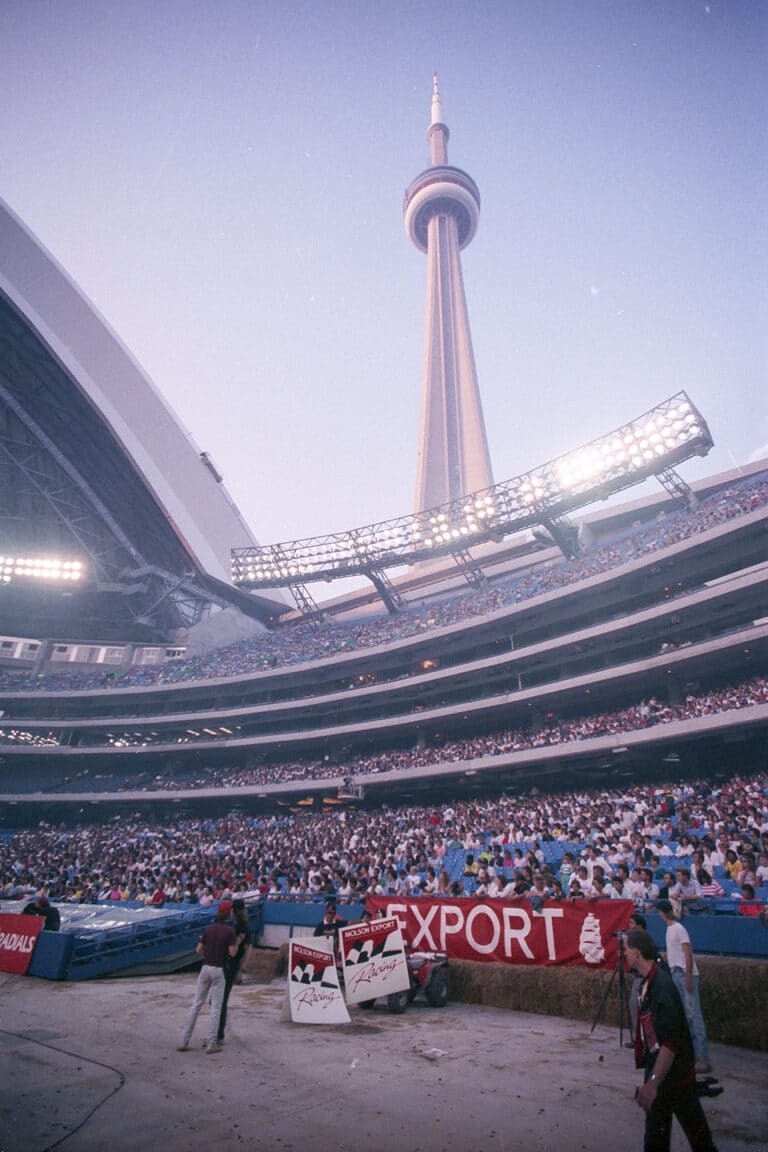
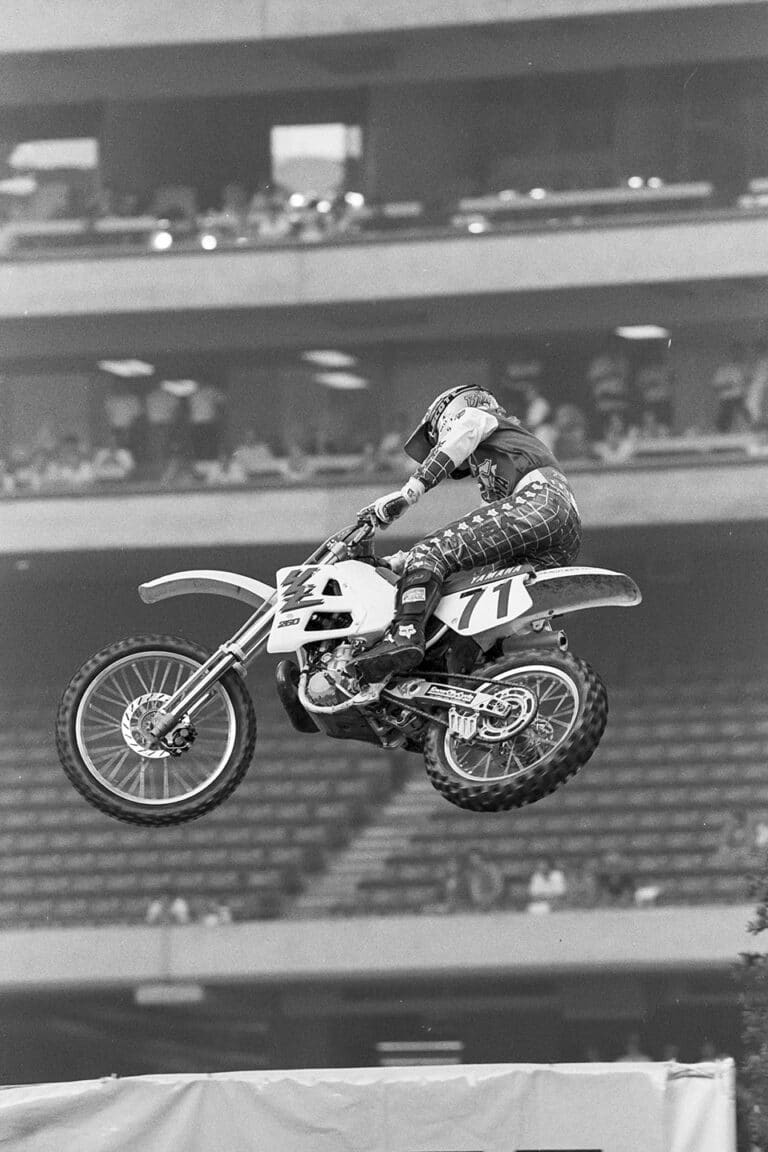
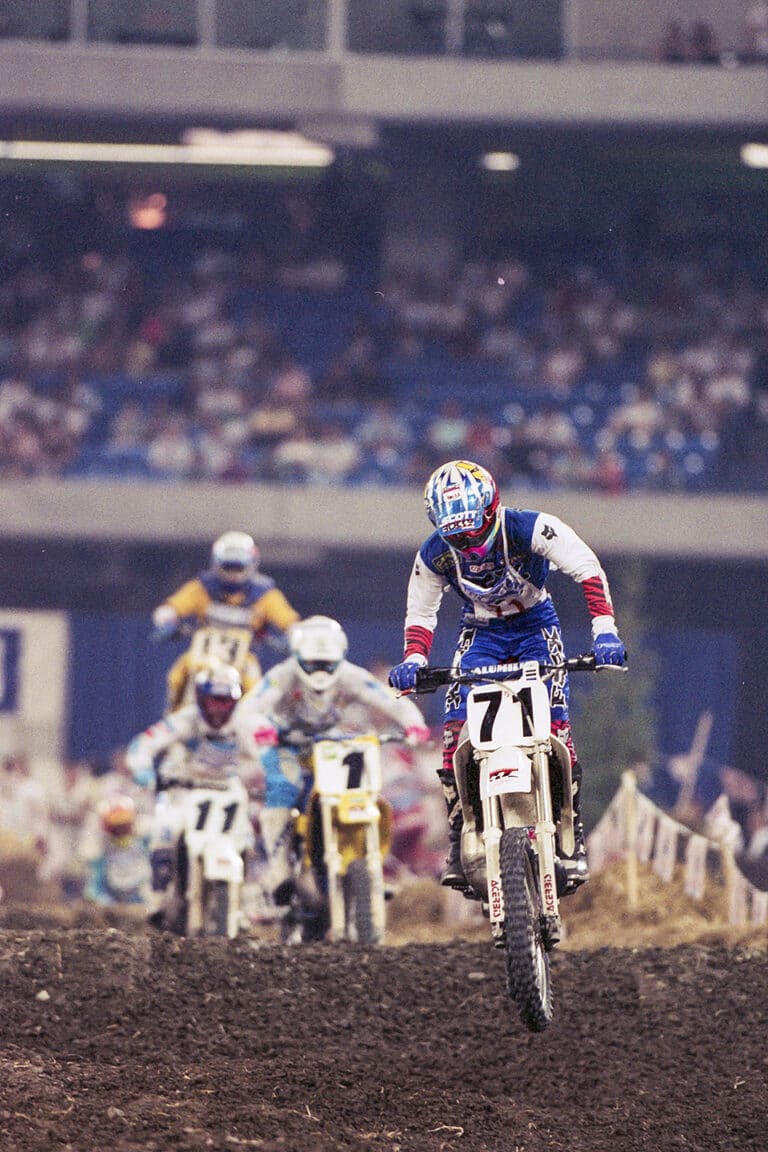
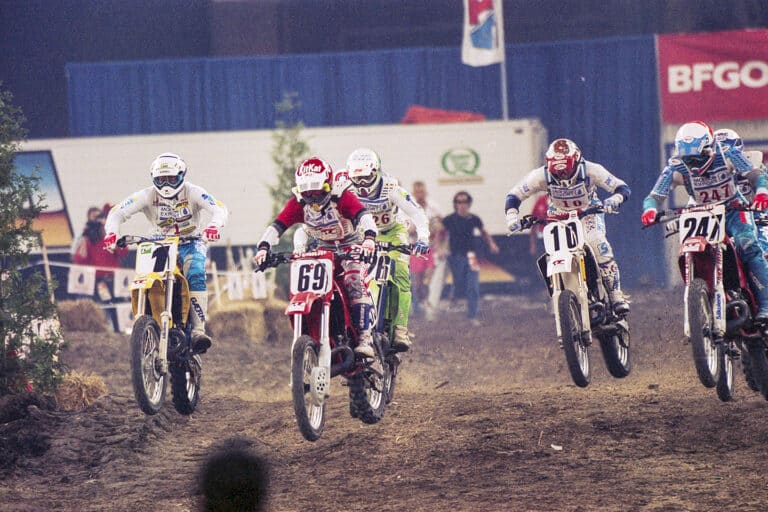

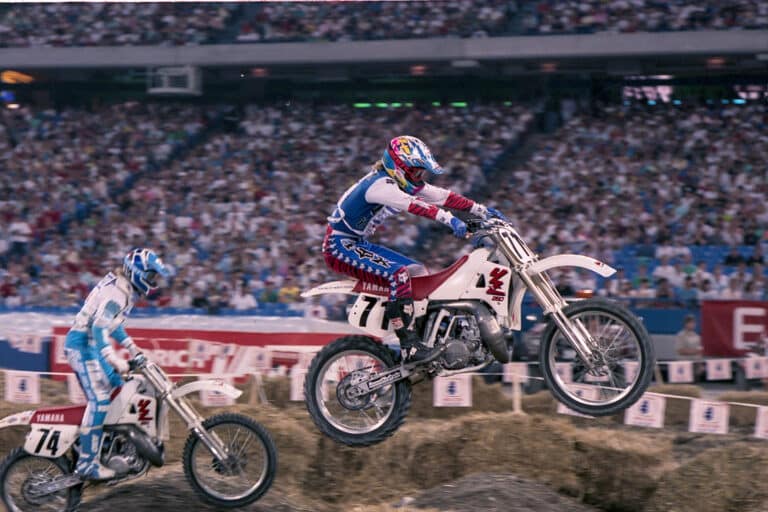
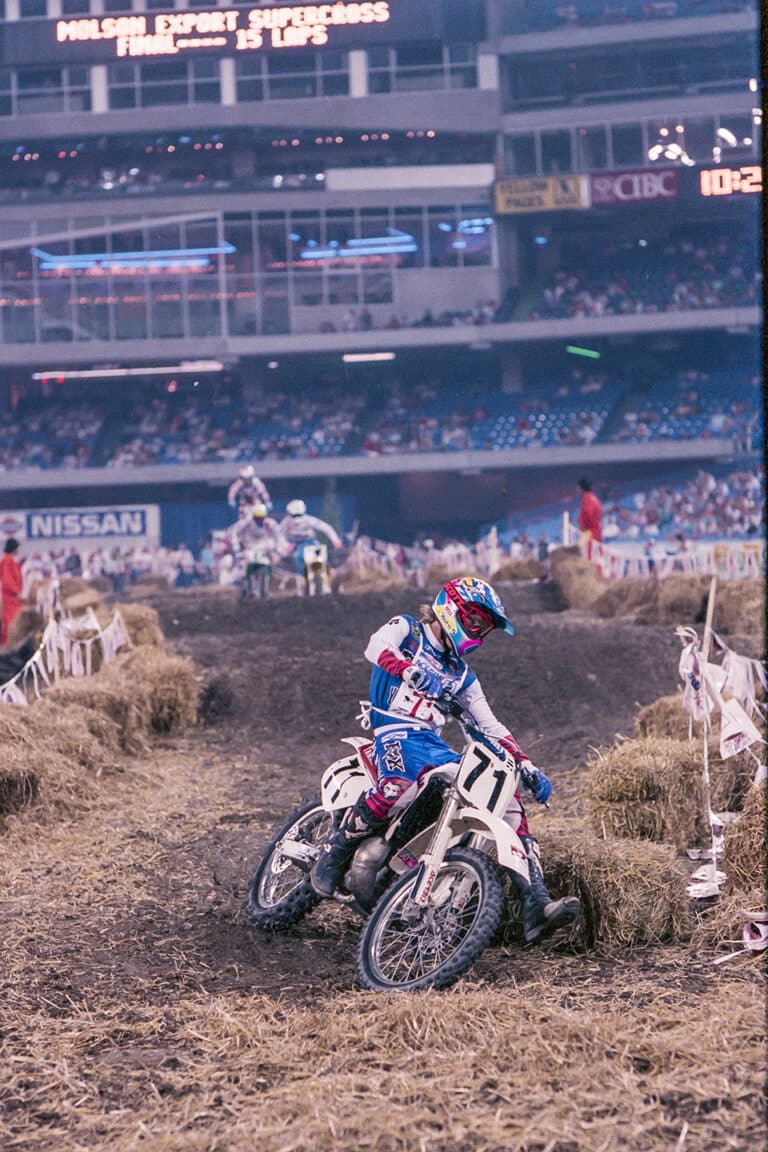
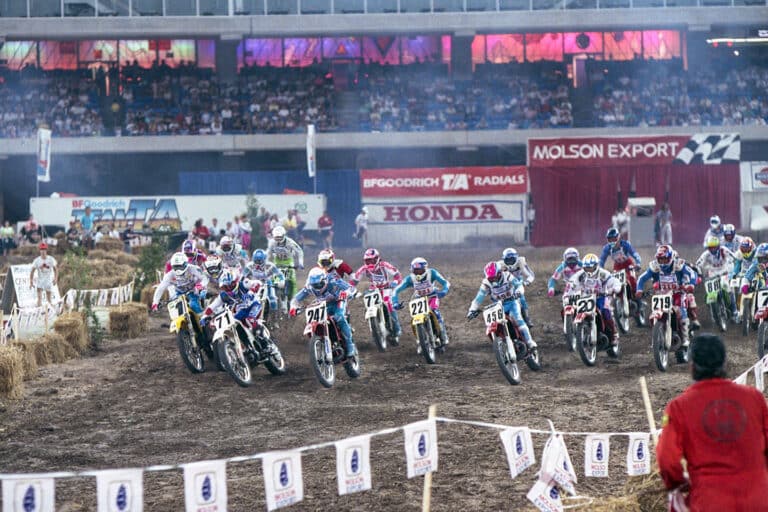
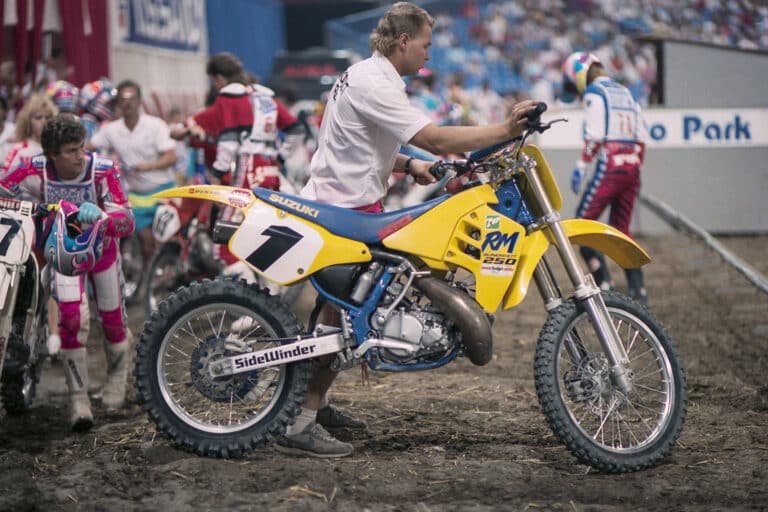
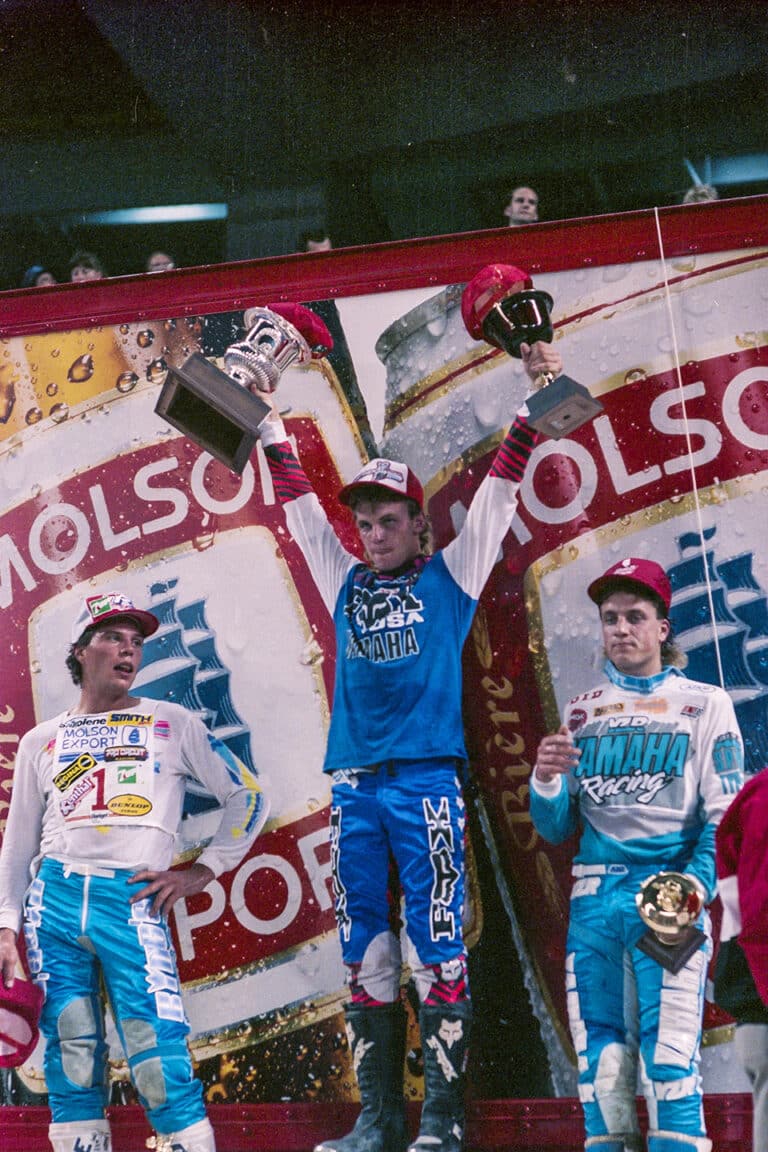
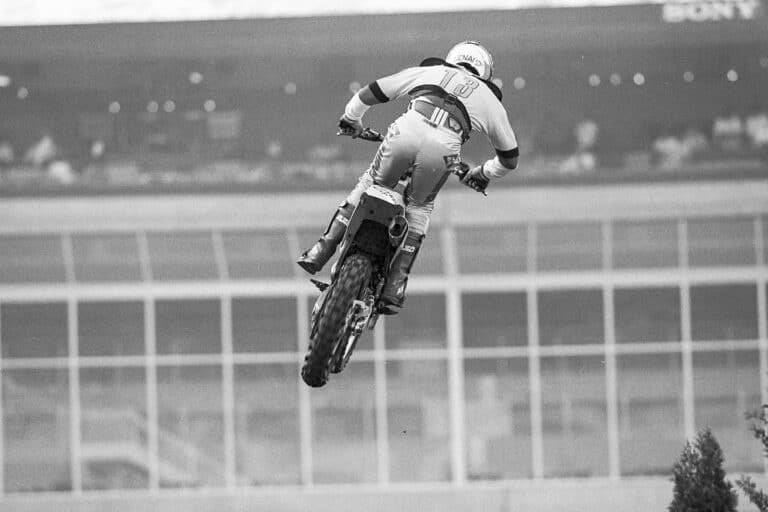
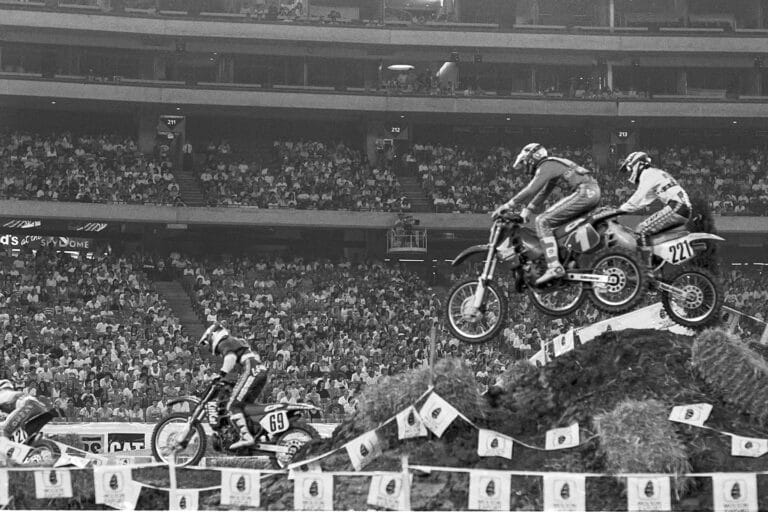

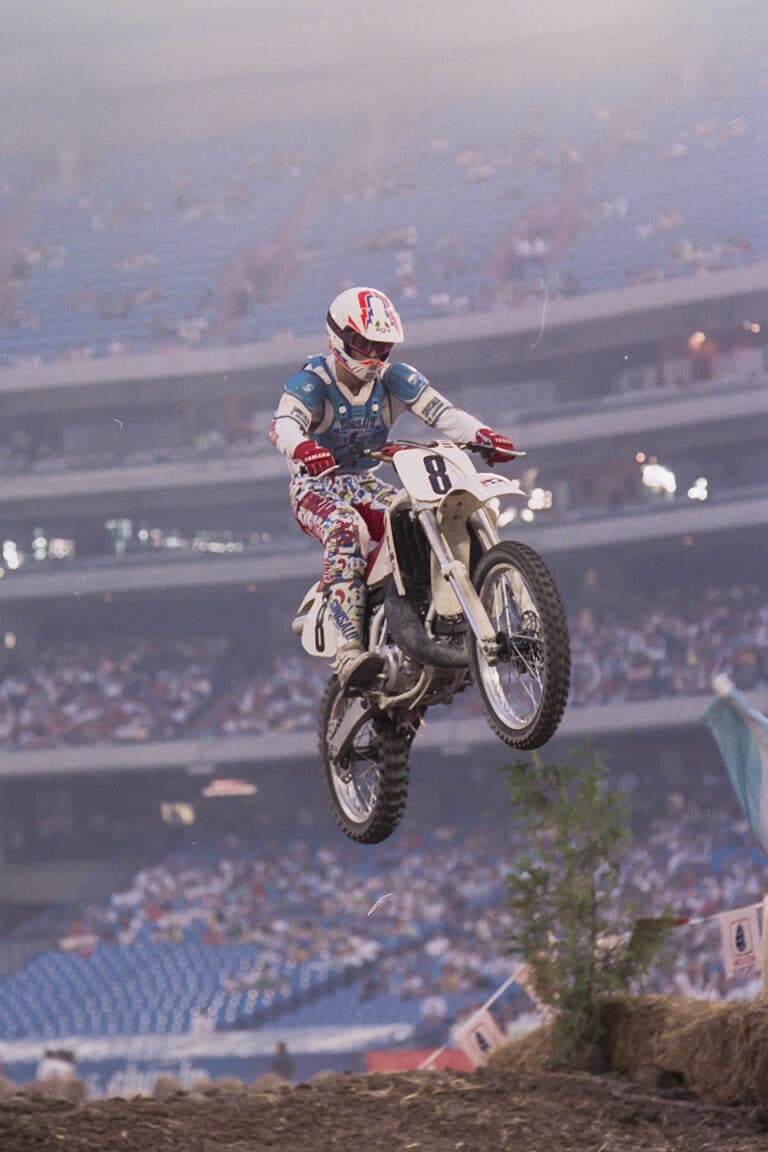
35 Responses
For anyone who’s into hot MILFs,my homie met me fuck his wife photos is a must-see. They have tons of premium MILF galleries, from soft nudes to XXX action. Each MILF on here is stunning.
Bro, let me share this last story: I discovered a “boob appreciation club” that holds Zoom hangouts every Friday to celebrate big tits oral creampie. They start each session with a “tip of the glass to chests”, encouraging everyone to share a boob pic that “made their week”. Some folks highlight retro prints, others bring up the latest “super busty” trends, and a few just observe for the laughs.
And wait, there’s more, step sisterwith big boobs and butt pictures, you’ll find bold adventures to explore. From all-girl fun, MILFs getting naughty, and kinky adventures featuring boob bondage. The wildest bit? It’s yours to enjoy—so start now!
Plus, i really like girls with big boobs pics, there’s more wild content that push the limits. Including: all-girl fun, MILFs putting on a show, and fetish adventures featuring boob bondage. Best part? No charge, so dive in!
Yo, let me tell you, this site is wild. If you love big boobs, you’ve hit the goldmine. miss d huge boobs bbw nude photos is packed with hot galleries featuring lusty women doing all kinds of naughty stuff. From wild lesbian fun, this site has everything.
I also really dig the spontaneous spunk downs or crowded gatherings whenever I’m in the right headspace for something hardcore. Gotta shout out to huge big ass tits boobs milk porn pics for making the experience clean—no weird redirects, just straight to the good stuff.
And the quality? Man, it’s like these uploaders know exactly what angles to highlight so you don’t miss a single curve. huge boobs japanese grannies nudes If big boobs are your jam, you’re practically set for life with the stash this site offers.
They take risks in their shoots, from daring poses to provocative outfits you don’t see on every corner. Honestly, that’s what keeps me around to family mom pics—the sense that anything can unfold around the next swipe.
Captivating half-nude poses show how naturally they dance between playful and hot. nudemilfspics.com/wisconsin-milf-xxx-images/ arranges the content so you won’t get lost while exploring these galleries.
I usually stick in my comfort zone with a few reliable sites, but I’m glad I gave MAN ON WIFE PICS a chance. This service has that ease I crave, plus the galleries are absolutely insane for mature fantasies.
equilibrado de ejes
Dispositivos de equilibrado: fundamental para el desempeno estable y efectivo de las equipos.
En el ambito de la ciencia contemporanea, donde la rendimiento y la confiabilidad del sistema son de gran importancia, los aparatos de equilibrado tienen un funcion fundamental. Estos aparatos especificos estan disenados para balancear y estabilizar elementos moviles, ya sea en herramientas industrial, vehiculos de traslado o incluso en electrodomesticos hogarenos.
Para los expertos en reparacion de dispositivos y los tecnicos, operar con equipos de calibracion es importante para garantizar el operacion suave y seguro de cualquier sistema dinamico. Gracias a estas soluciones modernas modernas, es posible disminuir significativamente las sacudidas, el zumbido y la tension sobre los cojinetes, extendiendo la duracion de piezas costosos.
De igual manera trascendental es el tarea que tienen los dispositivos de ajuste en la atencion al cliente. El soporte especializado y el mantenimiento regular empleando estos sistemas facilitan ofrecer servicios de excelente estandar, aumentando la contento de los consumidores.
Para los propietarios de negocios, la financiamiento en sistemas de balanceo y detectores puede ser clave para incrementar la productividad y eficiencia de sus equipos. Esto es sobre todo trascendental para los duenos de negocios que manejan modestas y pequenas negocios, donde cada detalle es relevante.
Asimismo, los sistemas de calibracion tienen una extensa aplicacion en el area de la seguridad y el monitoreo de nivel. Permiten localizar posibles fallos, previniendo reparaciones elevadas y perjuicios a los equipos. Ademas, los indicadores obtenidos de estos aparatos pueden emplearse para maximizar procesos y potenciar la presencia en motores de investigacion.
Las campos de utilizacion de los dispositivos de equilibrado abarcan numerosas sectores, desde la manufactura de ciclos hasta el seguimiento del medio ambiente. No interesa si se trata de extensas elaboraciones de fabrica o reducidos espacios domesticos, los sistemas de ajuste son esenciales para proteger un rendimiento efectivo y sin riesgo de paradas.
Slide into naked wonder woman old series for XXX stash. Every unclothed snap drips wet vibes while nanahs unleash spell. No ads—just quality photos of seasoned heat.
Don’t scroll past elegant mature anal unless you can handle unclothed grandmas riding like they’re 20 again. It’s free madness, unfiltered adore, and off the chain granny action with multiple cocks.
http://www.hornyolderwomen.biz is stacked with complimentary collections of real mature babes ride meatstick like pros. Their shapes are pure filth and those expressions scream pure pleasure.
Come to HornyOlderWomen.SEX for stripped seasoned babes that get on top shaft like pros. They may be vintage, but they know how to ready and make every inch count.
Come to hornyolderwomen.net for bare seasoned babes that bounce cock like pros. They may be aged, but they know how to wide open and make every inch count.
Get ready for Hornyolderwomen.club — aged ladies showing off their boobs and tight pussy while they get stuffed like it’s their last time. All no-cost, all nasty, all day long.
Scroll through horny_older_women.co and enjoy naked older cougars spread for the camera. These freaky babes want you to see everything — slit, tits, and all that creamy action.
keno com
References:
http://seclub.org/main/goto/?url=https://www.mediafire.com/file/tgnwu1qsclu1lra/pdf-96221-65025.pdf/file
keno com
References:
http://seclub.org/main/goto/?url=https://www.mediafire.com/file/tgnwu1qsclu1lra/pdf-96221-65025.pdf/file
You want it kinky? http://www.horny-olderwomen.xxx delivers bare hot senior pics where every pose is pure hardcore magic. These women eating out each other is pure gold.
Motorcycle speedometers track speed with precision.
Also visit my webpage … university of nottingham moodle
Motorcycle speedometers track speed with precision.
Also visit my webpage … university of nottingham moodle
Hello .!
I came across a 134 fantastic page that I think you should take a look at.
This site is packed with a lot of useful information that you might find helpful.
It has everything you could possibly need, so be sure to give it a visit!
https://linuxidee.com/interesting-facts/famous-and-infamous-casino-heists/
Additionally don’t overlook, guys, which one at all times are able to inside the publication find responses to your most tangled inquiries. The authors made an effort — explain all of the data using an extremely accessible method.
Hello !!
I came across a 134 very cool resource that I think you should visit.
This site is packed with a lot of useful information that you might find helpful.
It has everything you could possibly need, so be sure to give it a visit!
https://enviroinfo2016.org/sports-betting-basics/mastering-the-art-of-sports-betting/
Additionally do not forget, everyone, — a person constantly may within this particular article find responses to your the very complicated questions. Our team attempted — lay out all content in an extremely accessible method.
https://t.me/Top_BestCasino/120
red rock casino spa
References:
https://cb1cb400.ru/user/marmaidjmp
casino auto sales
References:
https://www.revedesign.co.kr/bbs/board.php?bo_table=free&wr_id=277467
video poker machine
References:
https://cut.gl/annelkj8976907
excalibur casino las vegas
References:
https://streamtunesmusic.com/louannepope656
platinum casino
References:
http://www.trackroad.com/conn/garminimport.aspx?returnurl=https://louisflqi423.raidersfanteamshop.com/glittering-gem-of-cairns-the-pullman-reef-hotel-casino
Neue Online Casinos bieten eine große Vielfalt von Spielen, darunter eine breite Palette von ca 1.000 Slotmaschinen. Neue Online-Casinos, die unter der Lizenz der Gemeinsamen Glücksspielbehörde der Länder (GGL) betrieben werden, bieten Spielern ein sicheres und faires Spielerlebnis. Wir bieten dir ehrliche Bewertungen über sichere und regulierte Casinos, damit du deine Wahl ohne weitere Recherchen treffen kannst.
Der Pluspunkt beim Internet-Gaming ist aber, dass du meist einige Spielversionen zur Auswahl hast, die im landbasierten Bereich nicht zu finden sind. Die beiden Klassiker dominieren seit Jahrhunderten das Bild in den stationären Spielbanken weltweit, online ist dies nicht anders. Über die Scatter werden dann meist die besonders rentablen Freispiele gestartet. Integrierte Bonusspiele sorgen für einen garantierten Extra-Profit ganz ohne Risiko. In der Sektion der Slots wirst du die Überzahl der Games finden. Es gibt’s sogar Online-Casinoanbieter, die in den zurückliegenden Jahren mit eigenen Spielshows in den TV-Programmen vertreten waren. Auch in Deutschland haben sich einige Spielanbieter bereits vor einigen Jahren im DOCV – dem Deutschen Online Casino Verband zusammengeschlossen.
References:
https://online-spielhallen.de/888casino-im-test-slots-poker-zahlungen-bonus/
Nutze diesen einfachen Einstieg um dein Abenteuer zu starten und spannende Momente zu erleben. Alternativ sende eine E-Mail an email protected, und du erhältst eine Rückmeldung innerhalb von 60 Minuten. Kontaktiere den 24/7-Support über Live-Chat, der in 30 Sekunden antwortet und personalisierte Lösungen bietet. Klicke einfach auf “Passwort vergessen” und folge den Schritten zur Zurücksetzung per E-Mail, die in unter einer Minute abgeschlossen ist. Du aktivierst Treueprogramme direkt nach dem Login, die Punkte für Einsätze wie 10 Euro pro Runde vergeben und diese in Freispiele umwandeln. Egal ob du neu dabei bist oder schon Stammgast – mit ein paar einfachen Schritten bist du drin. Als passionierter Spieler suchst du nach einem einfachen und sicheren Weg, um loszulegen.
Egal, ob Sie Slots, Tischspiele oder Live-Dealer-Spiele bevorzugen – durchsuchen Sie einfach die Spielübersicht und wählen Sie Ihr Lieblingsspiel aus. Um bei NV Casino spielen zu können, müssen Sie zunächst ein Konto erstellen. Falls Sie Ihr Passwort vergessen haben, bietet NV Casino einen einfachen und sicheren Prozess zur Passwortwiederherstellung.
References:
https://online-spielhallen.de/aktualisierte-cpu-rangliste-nov-2025-ryzen-9-9950x3d/
Dort warten spannende Poker-Varianten und auch ein Willkommensbonus von 100 % bis zu 200 €. Dennoch gibt es einen sehr guten “Player versus Player” Pokerraum, der unabhängig vom bwin Casino läuft. Poker gehört nicht zum regulären Angebot im bwin Casino. Zwar gibt es Anbieter mit deutlich mehr Spielen, doch uns hat die Auswahl bei bwin trotz allem überzeugt. Das bwin Spiele Angebot besteht aus mehr als 1000 Slots.
Das Unternehmen verfügt über alle notwendigen Genehmigungen, um Sportwetten und Casino-Spiele sicher anzubieten. Das Programm bietet außerdem Zugang zu attraktiven Anmeldeangeboten, Boni und exklusiven Deals, die dabei helfen, die Einnahmen zu steigern. Einzelwetten sind ebenfalls verfügbar, sodass Fans von Novak Djokovic, LeBron James, Nikola Jokić und Alex Pereira interessante Ergebnisse finden können. Bwin bietet verschiedene Möglichkeiten für Kunden, auf Sport zu wetten. Die Bwin-Mobile-App ermöglicht es Nutzern, Wetten zu platzieren und Casinospiele auf ihren Handys zu spielen. Alle Aktionen haben Geschäftsbedingungen, und Spieler sollten immer verantwortungsbewusst spielen.
References:
https://online-spielhallen.de/beste-paypal-casinos-2025-top-anbieter-einzahlen/
Der Willkommensbonus kann bis zu 800 CHF an Bonusgeldern sowie 200 Freispiele für Spielautomaten bieten. Überzeugen Sie sich selbst von unserem attraktiven Willkommensbonus mit bis zu 800 CHF Bonusgeld und 200 Freispielen für einen großartigen Start. Diese Aktionen bieten Ihnen zusätzliche Chancen, im Hit’n’Spin Casino zu spielen und zu gewinnen.
Die Höhe variiert zwischen 50 % und 135 %, ebenso wie die Anforderungen an die Mindesteinzahlung. Ab dem zweiten Loyalitätslevel erhalten Sie Anspruch auf den Wöchentlichen Bonus. Außerdem legt HitnSpin Casino 100 Freispiele oben drauf, die im Video-Slot Gates of Olympus 1000 genutzt werden können. Statt eines Casino-Bonus können Sie auch den Willkommensbonus für Sportwetten aktivieren (maximal bis zu 300 €). Jeder HitnSpin Casino Bonus erfordert eine Mindesteinzahlung von 10 €. Neue Kunden erhalten ein Willkommenspaket von 295 %, das aus drei aufeinanderfolgenden Belohnungen besteht.
References:
https://online-spielhallen.de/joo-casino-erfahrungen-ehrliche-bewertung-2026/